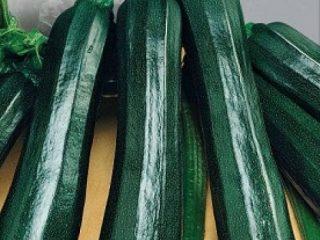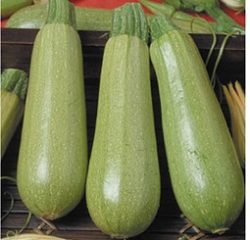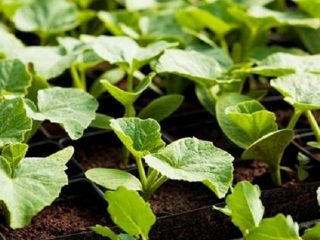Content
About 10 years ago, a vegetable such as eggplant was a delicacy, but nowadays every gardener grows a harvest of beautiful and ripe fruits. It's a matter of taste - once you try a piece of eggplant, it's impossible to refuse it. In this case, it would be a sin not to use the free space in your garden and supply your family with this wonderful vegetable. There are many varieties, but first let’s look at one of them called Vakula, which is ideal for planting in open ground.
Description
Eggplant Vakula is an early ripening variety and is the result of the work of Russian breeders. Plant bushes grow to a height of up to 1.5 meters, but sometimes when grown in a greenhouse, the growth can reach a little more than two meters. Harvesting ripe Vakula eggplant fruits can be done after 95-100 days, if you count from the time of emergence.
The Vakula variety of eggplant almost always brings a rich harvest. The weight of one fruit can vary from 100 to 400 grams. Taking this into account, a square meter of garden beds can yield from 9 to 12 kg of harvest. Such an abundance of fruits puts a lot of stress on the bushes of the plant and therefore they need to be tied up. As for planting, it is recommended to place no more than 3-5 plants in such an area.
The shape of the eggplant fruit Vakula is ellipsoidal, the shiny outer surface has a dark purple tint, and the flesh inside is white. At the same time, in terms of taste, eggplants of the Vakula variety stand out among other types. As for the dimensions, the length of the fruit is 17-20 cm with a diameter of 9-10 cm.
Invaluable features
In addition to the fact that the Vakula variety is distinguished by an early and abundant harvest, eggplants also have other advantages. In particular, it is worth noting that the formation and ripening of fruits occurs evenly and at the same speed. At the same time, there are practically no thorns on the plant. All this has a positive effect on the harvest.
And judging by the reviews about this plant, many summer residents have pleasant impressions.
Another distinctive feature of the Vakula eggplant is its good adaptation to ripening conditions. Moreover, it does not matter how exactly the planting was done - in open ground or in a greenhouse. In addition, the Vakula variety of eggplant can ripen in almost any region.
Landing
It is recommended to plant eggplants mainly in greenhouse conditions. In this case, the arrangement of young plants must be maintained in the following order. The distance between the rows should be from 60 to 65 cm. And directly between the bushes you need to maintain approximately 30-35 cm. In this case, for each square meter of the greenhouse plot there are 4-6 plants.
If the greenhouse is heated, then the density of the bushes will be 2.5 pcs./sq. m. If the shelter is not equipped with a heating system, then the planting density will be 3-3.5 pcs./sq. m. In this case, the bushes will develop normally and will not compete with each other in terms of nutrition and access to light.
For optimal planting, Vakula eggplant seeds are immersed to a depth of 1.5 - 2 cm. The plant adapts well to those places where melons and legumes previously grew. In addition, eggplant fruits develop well even after carrots are harvested. You can learn some of the subtleties of caring for eggplant fruits from the video:
Top dressing
A characteristic feature of Vakula eggplants, which are grown in greenhouse conditions, can be considered the need to apply various fertilizers. Moreover, additional nutrition for plants has a special composition and is applied not just once, but as many as three or even 5 times.Again, it all depends on how quickly the Vakula eggplant fruits are formed.
This should be done for the first time after the root system of the plant is finally fixed in place. This usually happens two weeks after planting young seedlings. Just in time for the appearance of fruits, it is necessary to once again feed the soil with nutrition based on phosphorus and potassium fertilizers. As soon as the first eggplants appear, it’s time to apply nitrogen-phosphorus fertilizer.
There is one important point regarding the application of plant fertilizer to the soil. About a day before this operation, you need to water the eggplants. And after the nutrients have been successfully added, you need to carry out the procedure of hilling the bushes. All this will allow plants to better absorb all micronutrients.
Many experienced summer residents resort to the following means as a good feed for Vakula eggplants:
- chicken droppings;
- wood ash;
- nitrophoske;
- cow dung solution.
This fertilizer is widely used due to its naturalness and the absence of chemical compounds, which only benefits the plants.
Application technology
If microelements are used to process Vakula eggplants, the solution should be prepared very weakly than when watering along with liquid fertilizers. Otherwise, the concentrated solution will simply burn the leaves and ovaries of the plants, which leads to a significant reduction in eggplant fruits. As for the main feeding, it is applied only at the root of the bushes. It is important to maintain precise doses of fertilizers. Otherwise, the root system may get burned, and the eggplant fruits may become dehydrated.
The prepared liquid fertilizer should be used in an amount of 1-1.5 liters for each bush. It is desirable that the solution be warm, approximately 22-24 degrees. If fertilizer gets on the leaves of a plant, it must be washed off immediately.
The formation of bushes is a necessary measure
Vakula eggplants, unlike other vegetable crops, have a rather whimsical character, which requires an increased level of attention to the plants. This involves regular watering, fertilizing and other necessary procedures.
Garter
Vakula eggplant bushes are distinguished by their strong and stable stems. However, if there are a large number of ovaries during the period of fruit ripening, the plant may tend lower and lower to the ground. And since the bushes of the Vakula eggplant variety are quite tall, the stems of the plants may not withstand the load and break.
In this case, you can stretch some kind of wire along the rows of plants to the maximum height from the ground, but not exceeding the height of the bushes. It should then be tied to twine. As another option, you can place a peg or trellis near each plant.
When tying the stems, you must act with extreme caution to avoid accidental chafing. You also need to give the bushes room for further growth. Since the branching of the plant is its vulnerable part, the eggplant garter should be done in this place.
Stepsoning
This operation is applicable to plants that are grown in greenhouse conditions. In this case, it is difficult to regulate the temperature, which causes the humidity level to increase. This usually results in the development of dense vegetation and side shoots.
You can start pinching 14-20 days after planting. To do this, you should first inspect the bushes for the presence of excess greenery. If necessary, cut it off, not forgetting to remove the tops of the bushes.
Conclusion
Eggplants are not such vegetables that you can forget about them after planting. They need care, otherwise what kind of harvest can we talk about?!













